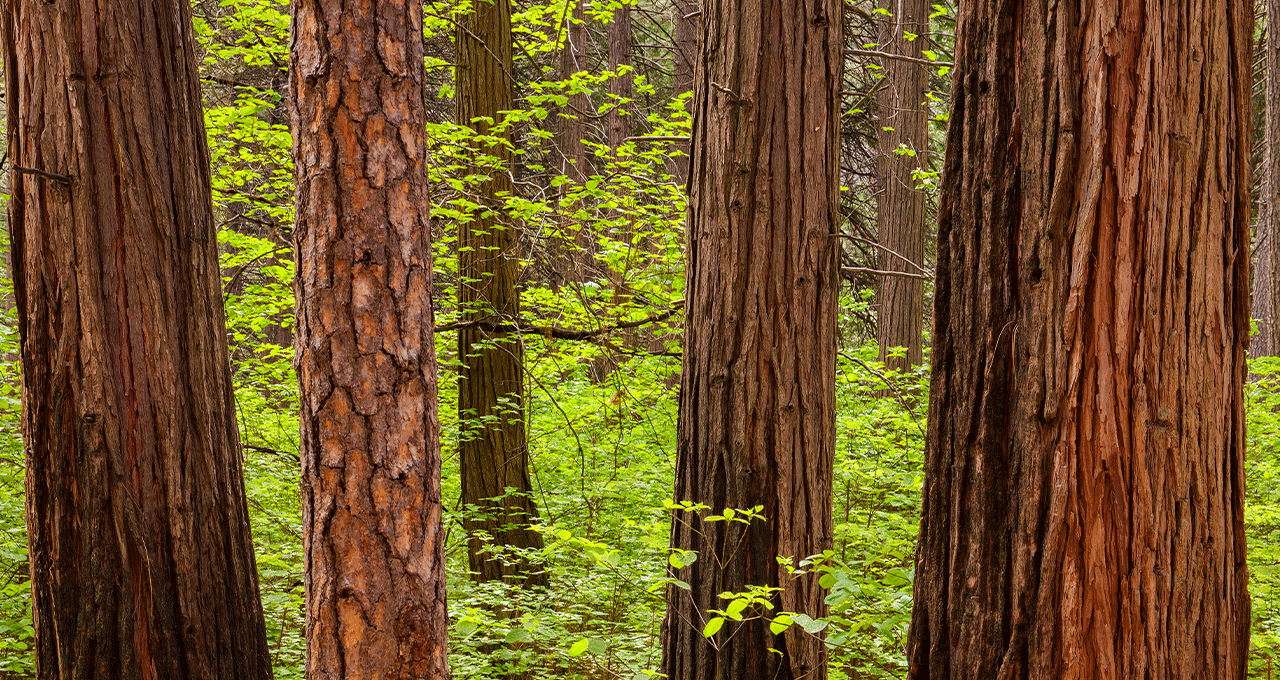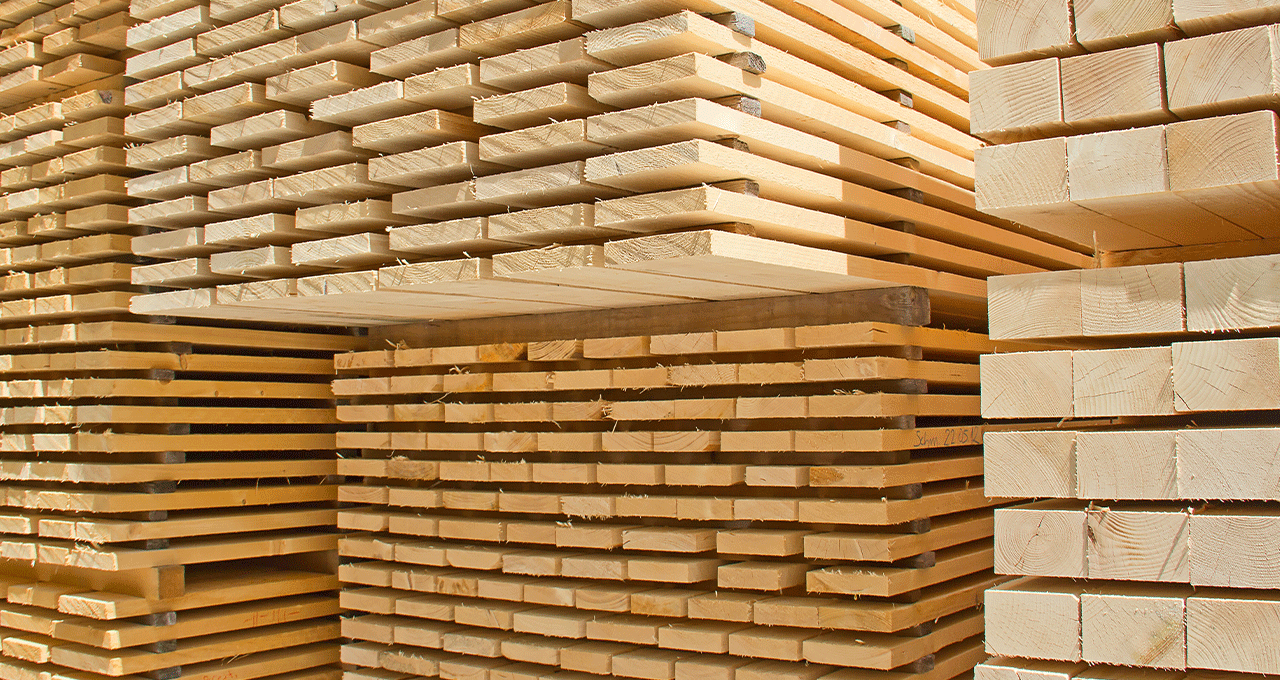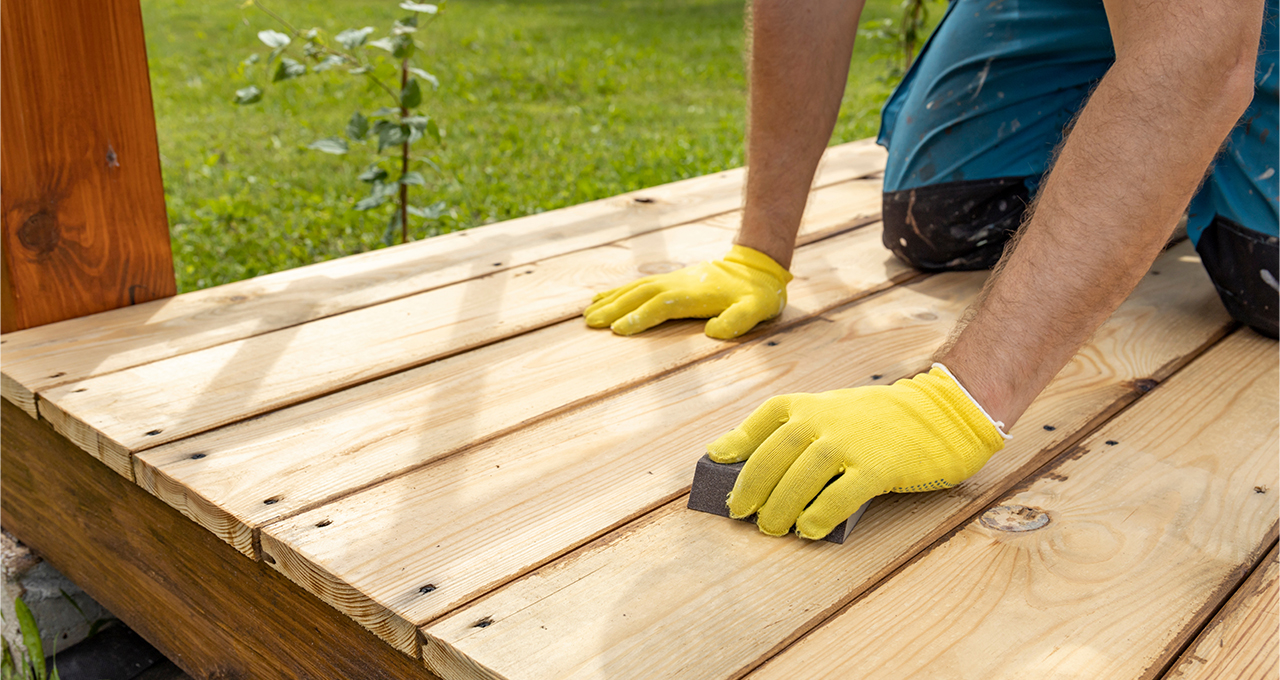Get to Know Your Softwoods: A Comprehensive Guide to This Versatile Lumber Type
Ah, trees. It’s not just the tree huggers who are fascinated by the sheer versatility of these powerful plants; gardeners, DIYers, tradies and multi-national companies all have a stake in them. Holding the key to housing, commercial buildings, infrastructure, home décor and landscaping, it’s easy to see why timber is hailed as the future of construction. With most sawn timber being softwoods, it’s fair to say that this lumber type is one of the lynchpins of contemporary society. But let’s zoom in. In the UK, there are multiple types of softwoods used in construction, from large-scale projects like building homes to smaller-scale DIY jobs such as a fence installation. Some of these lumber types are manufactured with specific purposes in mind, based on their grade and distinct properties. In this quick guide to softwood timber, we’ll give you an overview of the product, the various types on the market, plus why and how each of them is used. Ready to become a softwood pro? Contents:
- Softwoods: A Definition
- How to Choose Between Options
- Hardwoods and Softwoods: What’s the Difference?
- Recap
Softwoods: A Definition
Before we get into the nitty-gritty, allow us to kick things off with a definition. After all, it helps when we’re all on the same page. Softwoods are simply timber originating from the family of trees called gymnosperms. Typically, these trees are coniferous woody trees and shrubs whose branches drop pines or needles. Compared to other timber, they have a structure that is generally less porous, resulting in lighter, lower-density wood. Thanks to these characteristics, softwoods are widely used and globally imported/exported for a whole manner of uses.
The Softwood Myth
Just to get this out of the way immediately, it’s important to note that just because this timber category has ‘soft’ in the name doesn't mean that all softwoods are weak. In fact, it’s actually a common misconception. Because gymnosperm trees are so diverse in their presentation, you get a huge variability of physical characteristics from graining and colour to their weight-bearing capacity. Indeed, some softwoods’ strength even exceeds that of their hardwood counterparts (more on those later).
Properties
The global wood and timber products market is booming, despite recent setbacks during the lockdown years and part of this comeback is all tied up with sawn softwood timber. As we’ve seen greater demand in building supplies, furniture and the like, this versatile material has been able to come to the rescue. Faster growing than most hardwoods, it constitutes some of the cheapest timber around and is often considered a sustainable resource. Plus, thanks to naturally more lightweight and amenable qualities, it tends to be easy to cut, glue, manipulate and colour. Another standout feature is the uniformity of the graining and its related stability. 
Softwood species
When it comes to the natural world, softwoods are comparatively rare, despite the 87.9 million m3 consumed in Europe alone. That is to say, there are a few hundred softwood trees among the 73,000+ species out there, but those chiefly used in the UK amount to a handful. We haven’t the time to go through all of them, but here are the most popular ones explained.
| Species | Physical Properties | Working Properties |
| Pine | Pale brown in colour with a straight grain in a medium, even texture. It has moderate resistance decay, despite a lower durability. | Due to its even grain and lightweight profile, it’s very easy to work with, gluing, mailing, cutting and finishing well. Suitable for both indoor and outdoor projects if treated, including construction, furniture and crafting. |
| Cedar | Known for its iconic reddish-brown colour, aromatic scent and natural resistance to rot, decay and insects, Cedar is a popular choice. | With a long lifespan, durability and dimensional stability, it is useful for many applications from decking, cladding, furniture and garden landscaping. |
| Spruce | Featuring a pale cream appearance and even grain, Spruce is lightweight and possesses an impressive strength-to-weight ratio. | Thanks to its elasticity and workable nature, it has many uses from construction timber and decking to musical instruments and paper production. |
| Larch | Known for its high timber value, Larch is moderately resistant to decay, warping, cracking and distortion. Pale to reddish colour depending on subspecies, with a contrasting grain and knotty appearance. | Convenient for outdoor use as it’s easy to form and takes stain well: construction boards, posts, boat building, chipboard, pulp, flooring, fencing and garden furniture. |
| Fir | Douglas fir tends to be light brown to reddish-brown in colour, featuring a distinctive straight grain pattern and a fine to medium texture. | Tends to be relatively easy to work with and can dry very quickly. Not only does it glue, stain and finish well, but it has great rot resistance too. |
Grades
Softwood grades are determined by the characteristics, appearance and overall quality of the sawn wood. The grading system uses a letter-number system, with the first character indicating the timber’s ‘coniferous’ nature and the number denoting the toughness of the wood on an ascending scale.
- C14 – The lowest strength softwood available, suited to light-duty and non-structural uses where the load-bearing lumber’s appearance isn’t important. In terms of looks, there is some deformation, with individual knots permitted to reach half of the timber’s width.
- C16 – One of the most highly requested grades, since it’s strong enough to be used for most applications and is highly cost-effective, despite there being some small defects like grain deviation. Typically seen in internal construction projects, including floors, walls and roof joists.
- C18 – Appropriate for load-bearing structures that don’t require high strength, or applications where large dimensions / short lengths can be employed. Its moderate strength is paired with less knotting than C16, but deformation is more present than in C24 upwards. Rarely stocked by sawmills.
- C24 – Another of the most popular grades, with fewer defects than lower-grade softwoods and a high degree of strength suitable to architectural applications wherein a high load-bearing capacity is required or there are long unsupported spans. 15-16% more expensive than C16.
- C30> – While this scale continues up to C50, we’re not going to linger too much here. At C30 and higher, the timber is high-strength and suitable for high load bearing projects. Factors impacting the strength and deformation are only permitted to a low extent, with visual knotting being less prominent. Note that softwoods graded at C30 or above are rarely kept in stock.
On top of these common grades are more specialised categories, such as TR26, which is specific to roof tresses, and then entire dedicated systems for specific sheet materials like ply, which span from AB to CC grade as visible defects become more prominent and affect the strength of the material. 
Softwood Lumber Types
On top of all the species and grades, it’s handy to know that there are many lumber types to choose from, too. Thanks to the easy workability of the timber, their lightweight nature and ready availability, you will find them in many forms, both sawn and planed. Great news, if you need something specific for your projects! For the curious, here’s a quick glimpse into the popular options:
Construction Timber
It’s in the name, construction timber is lumber that has been sawn and processed for the purpose of construction. Usually, the types of wood used here will be of a high grade, allowing for a robust load-bearing capacity, long-lasting durability and all-around solid performance.
Cladding
Given how softwoods take on the colour of wood treatments like a duck to water, they make a great choice for timber cladding. With many types available, from shiplap to feathered edge, you also get a variety of designs, meaning that you can fine-tune your home exterior or outbuildings.
Board & Rail
The essential components used in post and rail fencing, this is one of the most prevalent softwood lumber types seen in agricultural contexts. You have the posts, that is, the vertical timber pieces you set into the ground and then the rails, which are the horizontal timber pieces that attach to these posts. For a more detailed look, check out our dedicated post and rail guide.
Plywood
Ideal for many DIY and construction projects alike, softwood ply is one of the most versatile sheet materials. From internal structural work to flooring, roofing, windows and garden landscaping, it’s a treat to work with. Because it comes in so many grades, it’s easy to find options that serve more functional purposes than the solely decorative and, of course, vice versa.
Fence Panels
This is a major one – fence panels. Often owing to the speed at which their trees grow, manufacturers tend to favour softwoods for fencing, and depending on the specific species used, consumers can enjoy the added benefits of an aesthetically pleasing colour and grain.
Garden Sleepers
Finally, let’s talk about garden sleepers. While some prefer the aged look of reclaimed railway sleepers, sometimes it’s more convenient electing for newly sawn ones, in the knowledge that they have been properly treated and will be veggie patch friendly. Plus, with their planed edges, they’re smooth to the touch and can blend into contemporary and traditional garden designs alike.
Applications
By now, it should be abundantly clear that, with softwoods, the applications are practically endless. They make great wood for raised beds, are an excellent choice for garden edging and even as sleepers alone they have so many uses. To avoid taking up your day, here’s a by no means exhaustive list of what you can do with the stuff:
- Fencing and gates
- Landscaping and gardening
- Decking
- Pet enclosures
- Construction work
- Furniture and décor
- Paper and pulp
- Flooring
- External joinery
- Windows and doors
- Home DIY
- Firewood

How to Choose Between Softwoods
Ultimately, the variety you choose comes down to your personal preferences and the specifics of the project at hand. With this said, be sure to read the earlier sections of this guide on wood gradings and tree species as they’ll give you some insights into the closest match. Carefully consider your priorities and needs. Is the workability and ease of handling most important to you? Then maybe pine and spruce are your answer. Doing some outdoor work? Perhaps look into cedar, with its in-built insect resistance. Other things to keep top-of-mind are colour and graining, durability, strength, moisture resistance and, of course, expense. By weighing these up, you can ensure you make the right decision.
Hardwoods and Softwoods: What’s the Difference?
Funnily enough, the main difference between the tree families they come from can be found in their seeds and cellular structure. Get this: gymnosperms (softwoods) produce ‘naked seeds’, while angiosperm (hardwood) seeds are found within their fruit’s protective layer. Even more interestingly, the former lack structures called vessels, which at first glance might sound inconsequential, but it’s really not. These vessels are the defining characteristic of hardwoods and are the reason for their more pronounced grain. There’s a reason why oak is so distinctive! One final difference between these two timber types to take stock of is their growth rates. The trees from which hardwood is sourced tend to grow more slowly, resulting in denser wood and limited availability, which translates into a higher cost.
Recapping On Softwoods
Softwood lumber processing has come a long way over the years to bring ample benefits to your outdoor space without completely devastating the environment. A truly versatile product, picking out the right variety and grade is a surefire step towards an enduring project, no matter the weather. If this guide to softwoods has left you itching for your toolkit, why not browse the rest of our blog for a DIY tutorial to suit your fancy? And when you’re done, go ahead and have a look at the varieties we stock. Our range of timber has got you covered.
 Processing
Processing